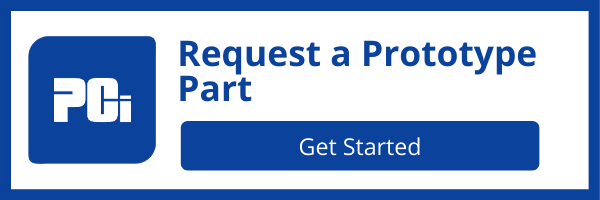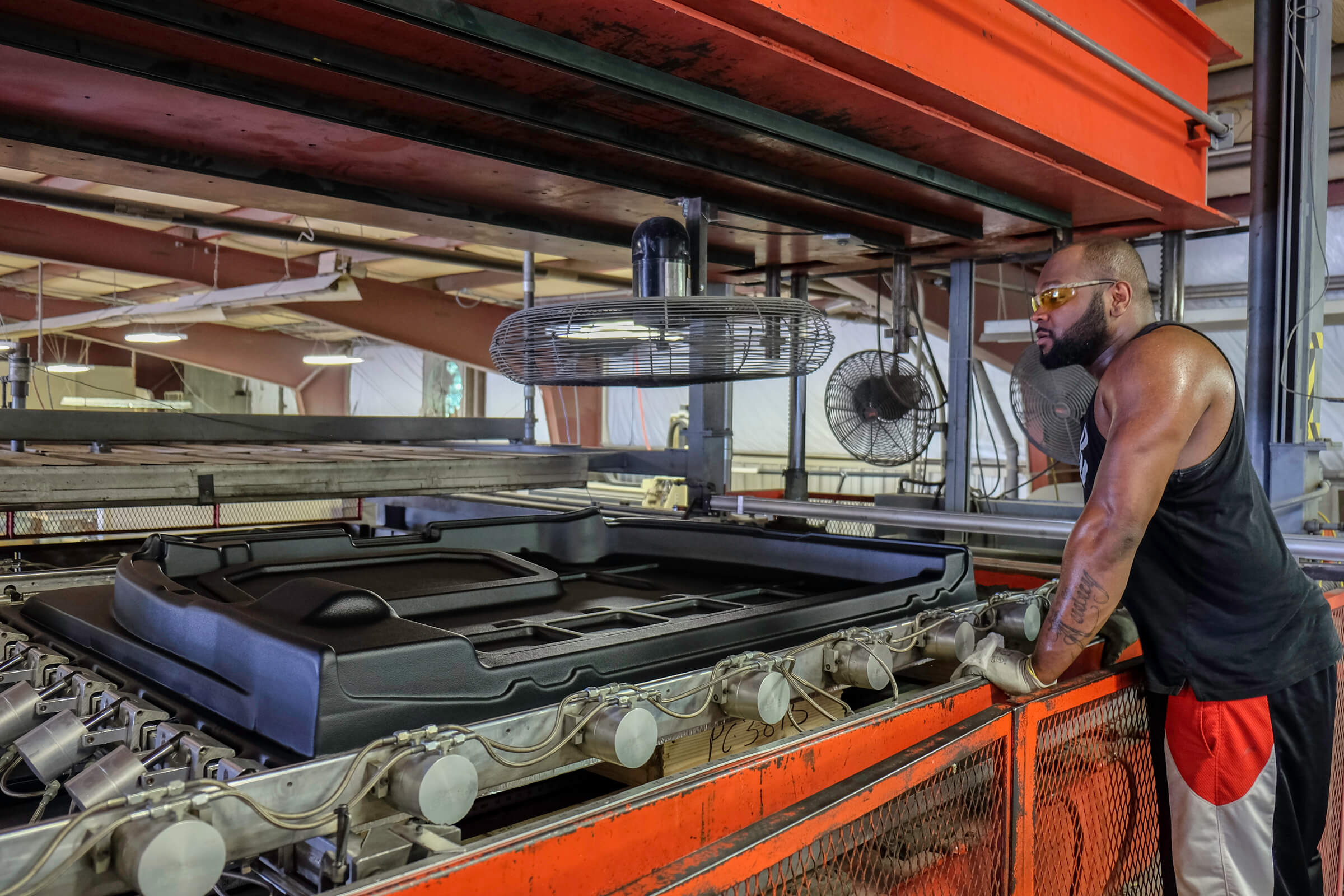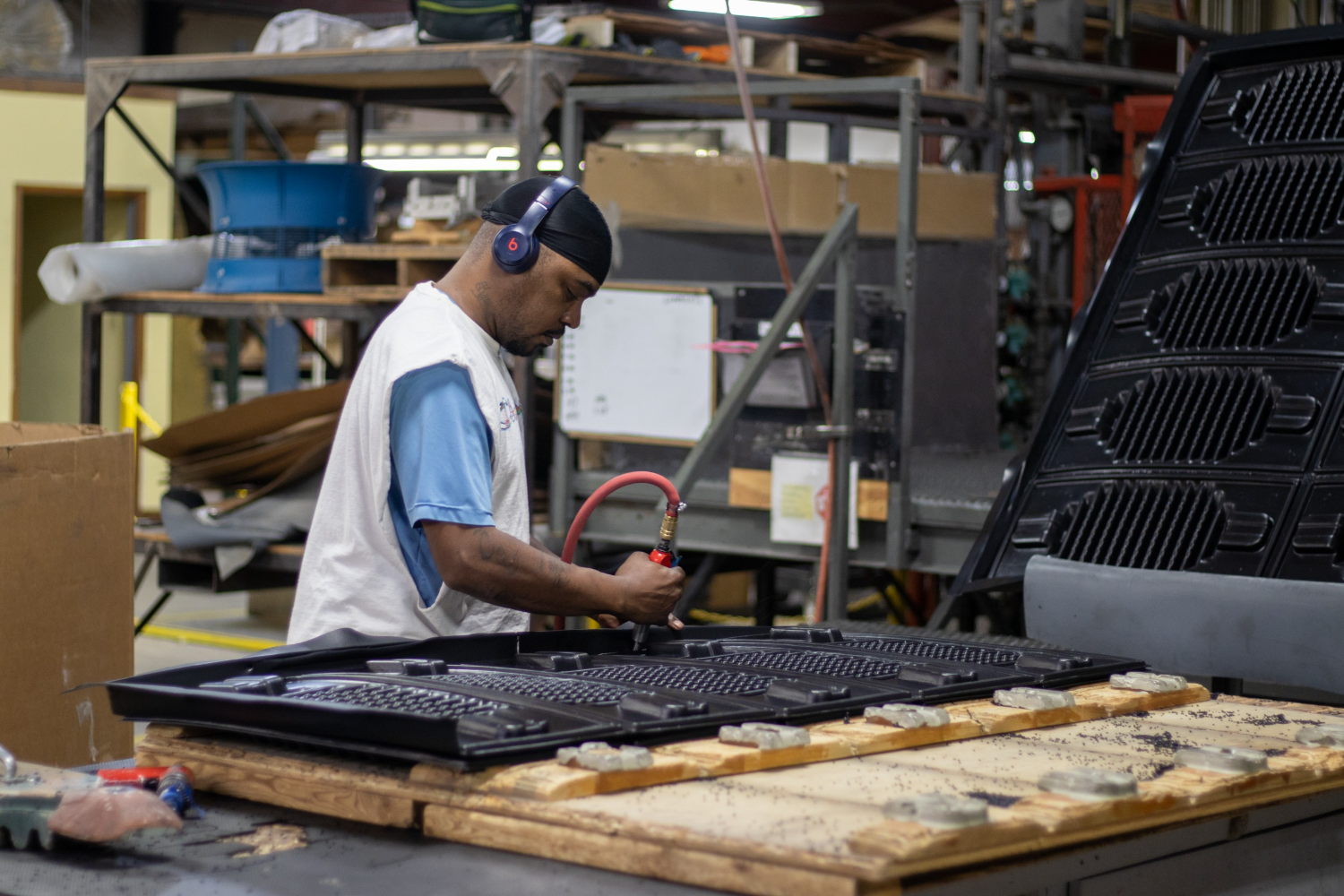The Science of Thermoforming - Basic Terminology Explained Part 3
This post continues our discussion about some basic terms and concepts related to the science of thermoforming. (Visit part 1 and part 2.) As noted previously, thermoforming is a manufacturing discipline founded on the science of thermodynamics, which deals with the relations between physical materials and heat/energy. In a previous article, we discussed the three methods (convection, conduction, and radiation) used to apply heat to a plastic sheet during thermoforming to shape it.
In this post we will discuss the flip side of heating plastic, namely removing heat from the mold in order to solidify the part with the desired shape and dimensions. You will find key terms discussed in this article in bold type.
The effects of cooling on part properties
Cooling begins once the heated plastic is in contact with the surface of the mold. During the process the heated plastic sheet stretches differentially against the mold surface. The sheet that touches the mold first produces the thickest portion of the formed part. The portions of the sheet touching the mold last usually yield the thinnest portions of the part.
As a result, the sheet touching the mold first is cooled slightly longer than the sheet touching the mold last. The differences in the cooling rate and cooling time across the sheet surface may cause thermal stresses within the final part.
The internal stresses are independent of polymer type or part dimension and, in the extreme case, can cause part defects such as warpage, shrinkage, and distortion. If possible, it is important to model these stresses during part design, as well as closely monitor and control cooling rates during manufacturing to avoid these issues.
Removing heat from sheet to the mold
Many production molds are actively cooled via the use of coolant channels built into the mold. Water is the most commonly used cooling medium with oil used on higher temperature applications. Water is pumped through the coolant channels then recirculated through a chiller to remove the heat and restart the process similar to the process used in an automobile radiator system.
As part of process control, incoming temperature is usually monitored to maintain a uniform mold temperature throughout the entire mold. The heat is removed from the thermoformed plastic sheet in contact with the mold surface by conduction. The heat energy is then conducted through the mold to the cooling channel, where it is removed from the mold by convection.
The rate of conduction is dependent on the thermal conductivity and thickness of the mold; while the rate of convection depends on the rate of flow and heat capacity of the coolant pumped through the coolant channels.
Cooling lines are the preferred tooling method but in many cases not used due to higher tooling cost associated. Some thermoforming companies will only run temperature-controlled tooling; however, PCI analyzes parts on an individual basis to make recommendations on if temperature-controlled tooling is required or preferred. Factors including volume, material, the shape of the part, and previous experience with similar parts help us in providing a recommendation.
Mold design features affecting cooling
When designing and building molds it’s important to understand how design impacts cooling rate, cycle time, and ultimately costs.
Coolant channels: The greater the distance between the mold/plastic sheet interface and the coolant channel, the longer it takes to cool the part.
Mold material: When it comes to removing heat, all mold materials are not created equal. Aluminum has a thermal conductivity of about 118 BTU/hr-ft/°F, compared to stainless steel’s thermal conductivity of 17 BTU/hr-ft./°F, meaning a mold made of aluminum will remove heat from the part 10x faster than a mold made of steel.
Removing heat from sheet to air
Air is a less efficient thermal conductor. As a result, the inner surface of the part in a typical, single-cavity thermoforming mold is primarily cooled by conduction through the side of the part in contact with the mold.
For heavy-gauge parts, fans are often employed to remove heat from the outer surface via convection—the more rapidly the air is circulated over the free surface, the faster the part will be cooled. To enhance the cooling rate, humidified air containing water is sometimes used.
After the molding cycle is complete, the part is removed from the forming machine at a temperature well below the heat deflection temperature and allowed to continue to cool to room temperature. Depending on the part, additional cooling fixtures may be required to control shrinkage, warpage, and other part stresses.
Conclusion
Cooling plays a critical role in determining part cycle time, total throughput capacity, and overall production costs.
PCI provides technical support to help customers model cooling effects on part properties and dimensions before production, and, as well, determine the best combination of tool design and materials to reduce cycle time and optimize throughput.


